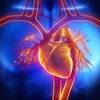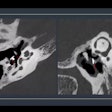Improvements in CT hardware and software are enabling clinicians to measure glomerular filtration rate (GFR) in a single kidney, an advancement that replaces less accurate options and permits a range of useful new diagnostic tools, according to researchers writing in Radiology.
A group from the Mayo Clinic in Rochester, MN, and Soon Chun Hyang University Hospital in Seoul, South Korea, tested a method that used CT to measure single-kidney GFR -- essentially, the ability of an individual kidney to clear creatinine from the urinary system. The CT-based method showed moderate correlation with the reference standard, which is based on the administration of a radiopharmaceutical.
The researchers believe that using a CT-only protocol could provide information on both renal anatomy and function at the same time, making it easier to plan and perform therapies such as revascularization, wrote Dr. Soon Hyo Kwon, Dr. Ahmed Saad, Dr. Sandra Herrmann, and colleagues (Radiology, April 6, 2015).
"With CT you have a good idea of the degree of stenosis, and you have a good idea of how much function the kidneys have," Herrmann said in an interview with AuntMinnie.com. "You can calculate renal blood flow with the CT scan, and if it's a difficult case, you can find out if it's worthwhile to do the revascularization because you can see the degree of stenosis with CT angiography, and at the same time you can calculate how much function the kidney has based on volume."
Herrmann is an assistant professor of nephrology, hypertension, and internal medicine at the Mayo Clinic.
Many uses for single-kidney evaluation
Single-kidney GFR measurement is potentially important in several areas, including kidney donation and in patients with disorders that only affect one kidney, such as ureteral obstruction, malformation of the urinary tract, or renal artery stenosis, the authors wrote. CT is often performed for clinical indications, and it offers an opportunity to assess both renal anatomy and split renal function in the same exam.
Radiopharmaceutical agents have typically been used to test individual kidneys, but for different technical reasons, they "are inaccurate compared with reference methods like inulin clearance and often provide only relative renal function," the authors wrote. "Therefore, simple and accurate quantification of single-kidney GFR remains a challenge clinically."
For example, the clearance rate for one radiopharmaceutical agent, iothalamate meglumine (Mallinckrodt), is apportioned to each kidney based on its estimated volume, but it doesn't reveal the organ volume and degree of stenosis of the renal arteries as CT does, Herrmann noted.
The researchers therefore decided to test the hypothesis that measurements of single-kidney GFR derived from 64-detector-row CT would agree with those from iothalamate clearance -- "a rigorous reference standard," they wrote.
The cohort included 96 patients (age range, 51-73 years; 46 men, 50 women) with essential hypertension (n = 56) or atherosclerotic renal artery stenosis (n = 40). All patients had serum creatinine levels of less than 2.5 mg/dL because of the requirement to use contrast media. Sodium intake restriction and renin-angiotensin blockade were implemented.
The investigators compared CT time-attenuation curves with GFR measured using iothalamate clearance assigned to either the right or left kidney based on relative volumes.
After contrast injection, flow studies were performed on a 64-detector-row CT scanner (Somatom Definition, Siemens Healthcare) at 120 kVp and 160 mAs using 20 x 1.2-mm collimation. Forty-five acquisitions were divided into three scanning sequences of 20 seconds, followed by 10 additional acquisitions at eight-second intervals.
The researchers acquired four 5-mm-thick sections in the hilum region after contrast injection using a power injector. This was followed 15 minutes later by a kidney volume study after a second contrast injection to determine right and left cortical and medullary regional volumes. The total effective radiation dose associated with all of the sequences was 26.4 mSv for men and 27.3 mSv for women, the authors noted.
CT images were reconstructed and displayed with Analyze software (Biomedical Imaging Resource, Mayo Clinic) to delineate cortical and medullary regions of interest in each kidney. The researchers then plotted and fitted cortical time-attenuation data using an extended gamma-variate model to derive curve-fitting parameters and obtain measures of renal function. The Analyze software also calculates renal blood flow from attenuation differences in CT images in a manner that is similar to fractional flow reserve software, Herrmann said.
Total iothalamate clearance was calculated by apportioning the percentage of volume for each kidney, assuming that the relative contribution of each kidney would be approximately proportional to its size.
The reproducibility of CT GFR was evaluated over three months in 21 patients with renal artery stenosis who were undergoing stable medical treatment.
CT, iothalamate yield similar GFR measurements
GFR measurements obtained with CT showed a moderate correlation with iothalamate clearance in patients with essential hypertension and those with atherosclerotic renal artery stenosis, the authors wrote (r2 = 0.89, p < 0.0001). Mean values were similar between the two GFR methods (38.2 mL/min ± 18 versus 41.6 mL/min ± 17; p = 0.062).
In addition, stenotic kidney CT GFR in patients with renal artery stenosis was lower than contralateral kidney GFR or essential hypertension single-kidney GFR (mean, 23.1 mL/min ± 13 versus 36.9 mL/min ± 17 [p = 0.0008] and 45.2 mL/min ± 16 [p = 0.019], respectively). The same relationship was found with iothalamate clearance (mean, 26.9 mL/min ± 14 versus 38.5 mL/min ± 15 [p = 0.0004] and 49.0 mL/min ± 14 [p = 0.001], respectively).
CT GFR was moderately reproducible in patients with renal artery stenosis who had been treated medically (concordance coefficient correlation, 0.835) but was unaffected by revascularization (mean, 25.3 mL/min ± 15.2 versus 30.3 mL/min ± 18.5; p = 0.097).
"CT assessments of single-kidney GFR are reproducible and agree well with a reference standard," the authors concluded. "CT can be useful to obtain minimally invasive estimates of bilateral single-kidney function in human subjects."
Limitations of the study included the use of central contrast material injection instead of peripheral intravenous infusion, which is more common with clinical CT, the group wrote. In addition, the single-kidney iothalamate GFR was apportioned to each individual kidney based on its fractional volume, an assumption that may affect the correlation and agreement between the two GFR methods.
For evaluating kidney function with an eye toward treatment, this study showed that CT can be used as a standalone test, Herrmann noted. However, iothalamate still helps inform physicians about overall kidney function; the two tests can be used to assess an ever-growing range of treatment options, she said.
If the volume of one kidney is just 10%, for example, "it's not even worth going after revascularization because the kidney is too small," she said. "So we continue to use iothalamate to check GFR. You restore blood flow after revascularization, but not all patients get better and you're trying other therapies."
For example, ischemic hyperperfusion injury might account for some patients doing worse after revascularization, and the combination of CT and iothalamate clearance can be used to monitor the patient.
"That sudden burst of oxygen can activate rapid oxidation" of tissues after blood flow is restored, Herrmann said. "We follow up with another CT scan, do the same measurements, and do an iothalamate test apportioned for each kidney to see how much function is gained."



















